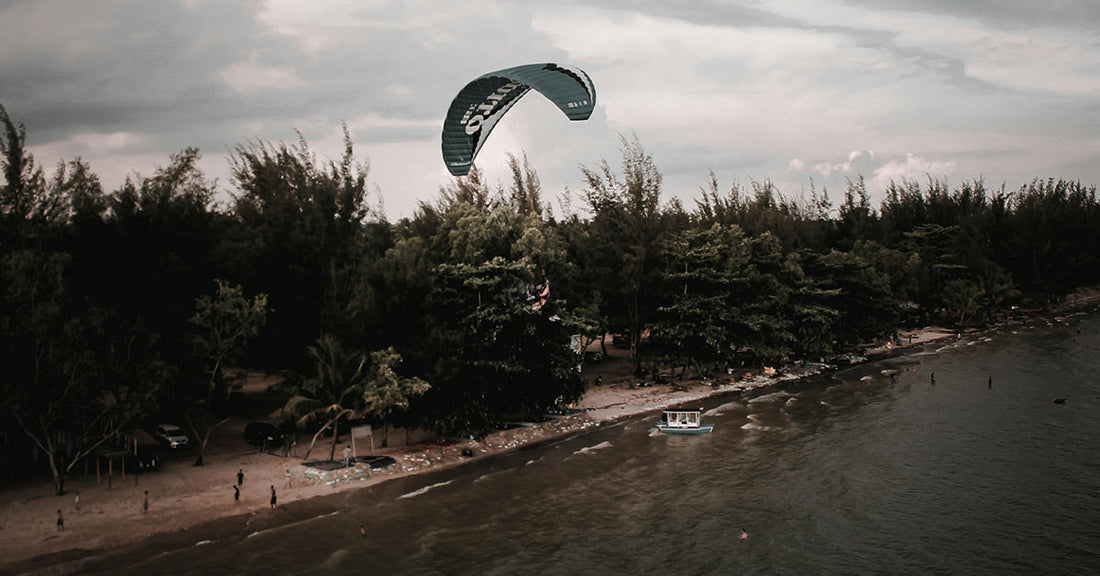Paragliding Threatens Orlando Wetlands and Endangers Wildlife Survival
Matthew Russell
In the tranquil expanse of the Orlando Wetlands, an unlikely disturbance has raised alarms among wildlife enthusiasts and conservationists alike. Paragliders, typically associated with recreational soaring, have recently flown over this protected area, unsettling its rich ecosystem.
The Orlando Wetlands, spanning 1,650 acres of marshland and home to a variety of endangered species, has long been a sanctuary for birds, reptiles, and other wildlife. However, the intrusion of motor-powered paragliders into this delicate space has sparked controversy, culminating in complaints filed with the Federal Aviation Administration (FAA) and the Florida Fish and Wildlife Conservation Commission (FWC).

Paragliding disrupts the fragile wildlife in the Orlando Wetlands.
Impact on Bird Populations
The sight of paragliders weaving through the wetlands is not just an aesthetic disruption—it has serious implications for the wildlife that inhabit this space. As one local photographer, James McNair, observed, the paragliders flew perilously close to nesting areas where birds such as wood storks—federally listed as threatened—are known to breed, reports the Tampa Bay Times. The sudden intrusion sent flocks of birds scattering, abandoning nests and chicks in the process. This behavior can have detrimental effects on the health of these birds, especially when it disrupts their reproductive cycles.
The wetlands host over 60 species of birds, from the flamboyant Roseate spoonbill to the more modest flycatchers. Many of these species are particularly sensitive to disturbances during nesting and feeding times. When disturbed, birds expend valuable energy fleeing from perceived threats, a behavior that not only disrupts their feeding but can lead to higher predation rates and increased stress, ultimately affecting their long-term survival. According to a study published in Cambridge University Press, repeated disturbances from aerial activities, such as paragliding, can reduce breeding success by forcing birds to abandon nests, which increases the risk of predation.

Migratory birds rely on the wetlands during critical stages of their life.
Paragliders and Human-Wildlife Conflict
The conflict between recreational activities and wildlife conservation is not new, but the issue of paragliding over sensitive areas like wetlands is a growing concern. The noise produced by powered paragliders, along with their visual resemblance to large raptors, triggers fear responses in many species. This fear often results in animals fleeing from their natural habitats, increasing their exposure to danger.
Researchers have found that such disturbances cause higher stress levels in animals, affecting their health and survival, the Cambridge University Press study maintains. In addition to physiological stress, animals also lose crucial feeding time, which can lead to body condition loss—a significant factor for many species, especially during the breeding season.
When animals are repeatedly disturbed, they may eventually habituate to human presence. However, researchers argue that this adaptation can be problematic, especially for species that do not easily adjust to human presence. For example, waterfowl in the wetlands may become more vulnerable during their moulting period when they are less able to flee from danger.
The intrusion of paragliders during this critical time could significantly reduce the birds' chances of survival and successful reproduction.
 Paragliding causes stress to wildlife during nesting and feeding.
Paragliding causes stress to wildlife during nesting and feeding.
Regulatory Gaps and Conservation Concerns
Despite these potential risks, there is no comprehensive regulation to address free-flight activities, including paragliding, over wildlife sanctuaries. While some restrictions are in place for aircraft over protected areas, paragliders often operate in an ambiguous legal space. The Orlando Sentinel reports that after the incident in the Orlando Wetlands, local authorities have expressed concern over the lack of clear guidelines regarding low-flying recreational aircraft. This gap in regulation makes it difficult to prevent or mitigate the negative impact of such activities on wildlife.
The city of Orlando, which manages the wetlands, has yet to implement specific flight restrictions, though they have acknowledged the disruption caused by paragliders. In response to public outcry, the city plans to discuss the issue with the FAA and FWC to determine if further action is necessary to protect the wetlands from future disturbances. However, this issue points to a broader need for comprehensive research and regulation regarding aerial activities in sensitive ecosystems. The lack of data on the effects of recreational free-flight activities on wildlife makes it difficult for conservationists to advocate for stronger protections.

Wildlife in the wetlands need undisturbed space for survival.
Moving Forward: Protecting Our Wetlands
The incident at the Orlando Wetlands serves as a reminder of the complex relationship between human recreation and wildlife conservation. As the popularity of activities like paragliding and drone flying increases, it becomes more important to ensure that these activities do not harm the delicate ecosystems that support countless species.
Establishing clear regulations, conducting further studies, and promoting awareness among recreational pilots are all crucial steps in preventing future disturbances and preserving the biodiversity of wetlands like those in Orlando.
While recreational flying can be a thrilling experience for pilots, the impact on vulnerable species is undeniable. With increased awareness, better regulation, and more research, it may be possible to strike a balance between human enjoyment and wildlife preservation, ensuring that natural areas like the Orlando Wetlands remain safe havens for generations to come.
Click below to make a difference.

